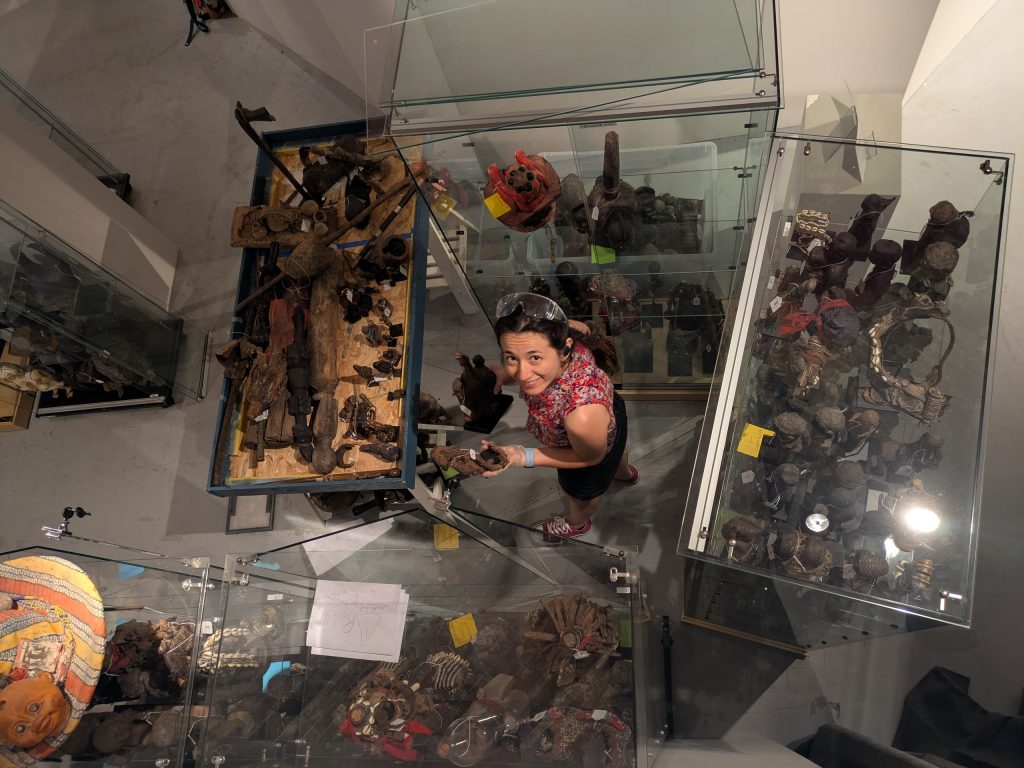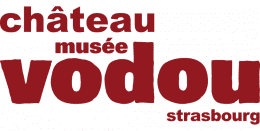New exhibition // Seeing the unseen: the storeroom unveiled
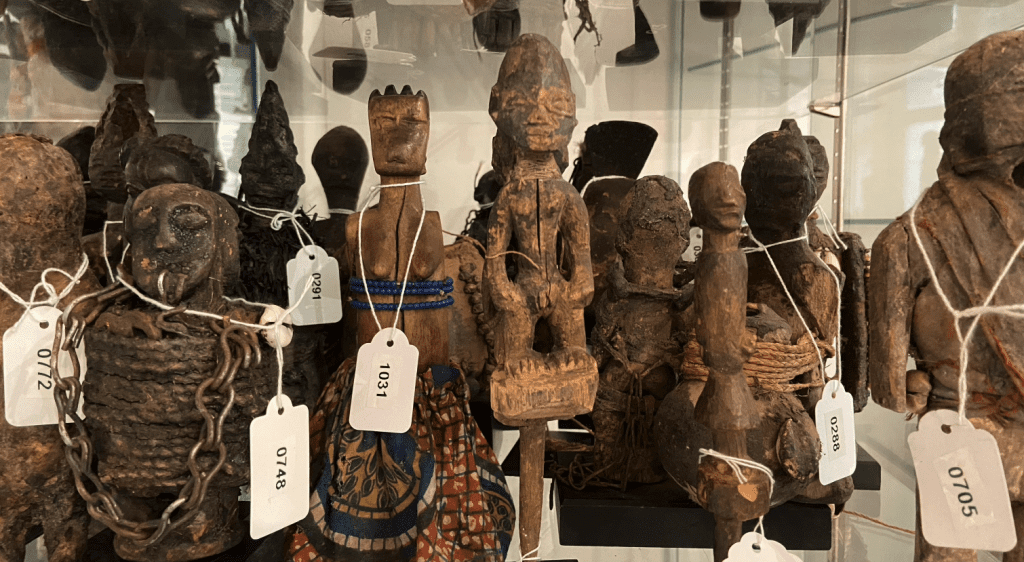
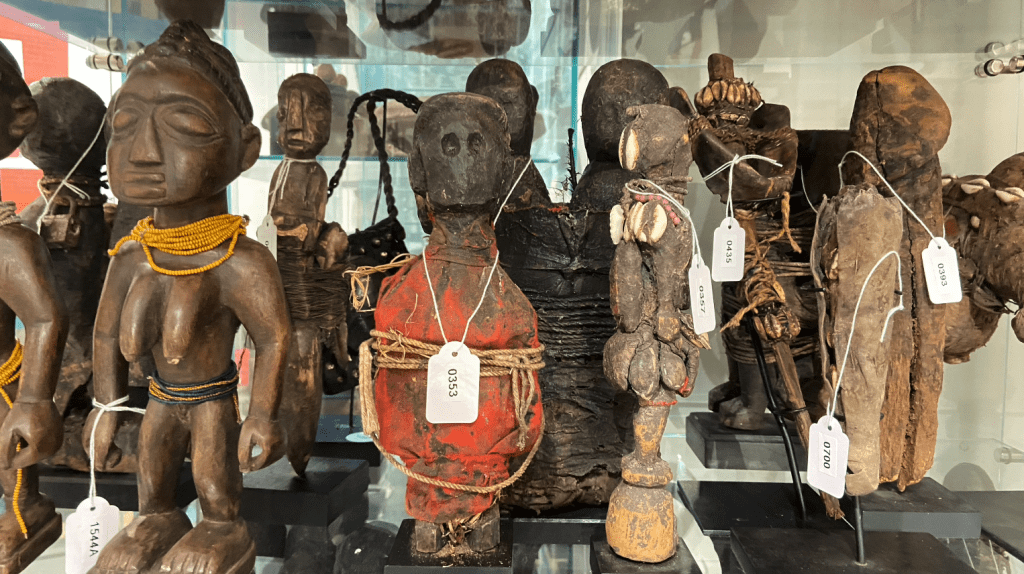
INTRODUCTION
Seeing the unseen: the storeroom unveiled
Temporary exhibition from 16 October 2025 to 22 June 2026
In a museum, the only thing differentiating an exhibited object from a preserved object is a display case.
After a major reorganisation of its storerooms, the Château Vodou lifts the veil on what goes on behind the scenes.
Storage areas, often inaccessible and perceived as spaces where objects are simply kept, are in fact the beating heart of a museum. They enable conservation, study, and transmission.
On average, they house more than 85% of the objects in a collection that are considered ‘too fragile’, ‘off-topic’ or ‘awaiting further information’.
With this new exhibition, the museum team aims to address the principles of heritage conservation, the technical restrictions of storage facilities, the crucial role of inventory, and the ethical issues and controversies that currently affect our practices.
What is the role of a museum? Where does the Vodou museum’s collection come from? How can we preserve objects made of organic materials, some of which are perishable, some sacred, and how can we talk about them? How much of the invisible do we carry with us, even in a museum? What can be preserved, and for how long? Can all objects be exhibited? And who do they really belong to? How can strict museum standards be reconciled with ecological imperatives?
Through the history of the Arbogast collection, we dive back into the geography and history of Vodoun. Each object tells a complex story involving living practices, Western and African perspectives, and museographic choices.
Along the way, visitors will be invited to question the very mission of the museum. Indeed, protecting, interpreting and exhibiting are not neutral activities. They represent a commitment, and sometimes a dilemma. As a self-financed community museum, the Château Vodou embraces its uniqueness: preserving a treasure of collective memory, a fragile heritage born of living cultures, in a listed building, with limited resources.
‘Seeing the unseen’ is at once an exhibition, an investigation and an invitation to think together about the place we give to cultural heritage – today and tomorrow.
A. Beck
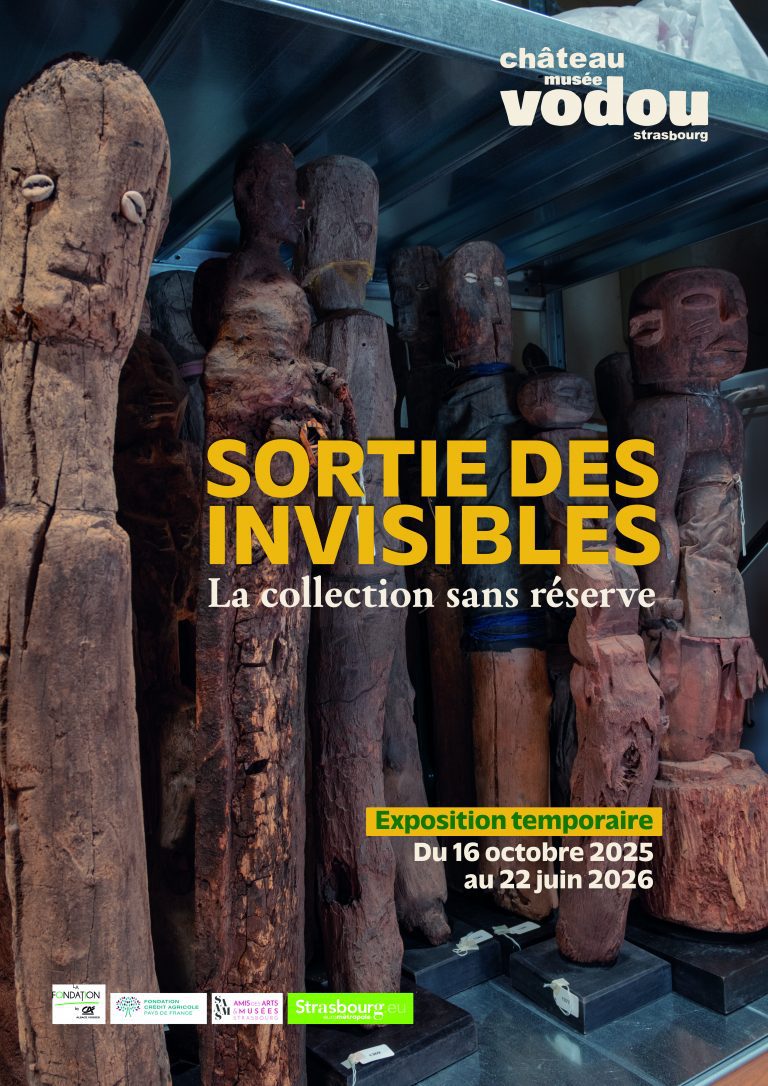
Exhibition team
Collectors: Marie-Luce and Marc Arbogast
Curator: Adeline Beck
Set designer: Ana-Carolina Gonzalez Palacios
Scientific writing: Elise Matt-Gehringer, Catherine Elsensohn, Jean-Yves Anézo, Adeline Beck, Kéfil Houssou, Ana-Carolina Gonzalez Palacios, Alice Niemi, Michael Mailfert, Maria Hirica
Translations : E. Matt-Gehringer, Anna Sgryska
Collection inventory and storage refurbishment: Katia-Myriam Borth-Arnold, Catherine Elsensohn, Adeline Beck, Ana-Carolina Gonzalez Palacios, Alice Niemi, Maria Hirica, Pascal Beck, Taner Tasar, Loïc Anézo, Evelyne Beck, Iyad Chambet, Jade Schreckenberg, Natalia Lorena Cocis.
Podcast: Kawati Studios
Project support: Compagnons du devoir, Crédit Agricole Heritage Foundation, Société des Amis des Arts et des Musées de Strasbourg, EFH destination Strasbourg, Crédit Mutuel, Maison Klein, Eurométropole de Strasbourg J. Gérard, D. Gehringer, F. Undreiner, G. Jean-Charles, S. Freyzs.
Introduction by the Collector
I am deeply gratified by the decision of the Château Vodou Museum team to use this exhibition as an opportunity to shed light on the very meaning and function of a museum. Their objective — to highlight the work of conservation by exceptionally opening our storerooms to the public — is both rare and commendable.
Since time immemorial, the collection of cultural objects has served as a bridge between peoples, fostering mutual understanding and intercultural dialogue. Yet it is undeniable that certain objects, once destined for veneration or ritual use, have become today mere collectible items, sometimes subject to speculation, with public access restricted or even commodified. Such tensions raise fundamental questions about the value, restitution, and preservation of cultural heritage.
The approach undertaken by Marie-Luce and myself is rooted in this reflection. We have assembled a unique collection of Vodou objects not out of a spirit of profit, but from a sincere desire to understand, to cherish, and to transmit the richness of this culture. Many of these objects, often condemned to oblivion or destruction, have for us been a school of learning, a form of artistic expression, and a vessel of social, religious, and ecological history.
This work of collecting has been conducted with respect and integrity: each acquisition was voluntary, purchased at the price requested, without coercion or speculation, and none of our pieces has ever been resold. When errors or copies were identified, they were not integrated into the collection — a testament to our commitment to authenticity. Our aim has never been financial gain, but education and respect for these cultures.
We have also sought to ensure that this collection might serve as a written record, documenting in depth the religious, social, and environmental meanings of Vodou, thereby contributing to a greater recognition of a spirituality so often misunderstood. By participating in ceremonies and collaborating with experts and our team, we have endeavoured to honour and to highlight this tradition in all its complexity. The recent history of this collection, assembled after 1974, falls within the framework of the UNESCO Convention, strengthening our conviction that this undertaking constitutes neither a spoliation nor a matter for restitution, but rather a contribution to the valorisation of a world heritage. Recognition by the government of Benin — particularly through our collaboration with the future museum of Porto-Novo — attests to the credibility and legitimacy of our commitment.
This exhibition aspires to reveal and celebrate the richness of Vodou, emphasising the importance of this culture in the history, social organisation, pharmacopoeia, and ecology of the region. Beyond being a mere assemblage of objects, it represents a message of openness, respect, and recognition towards a millennia-old tradition whose influence extends far beyond the borders of West Africa.
M.Arbogast
The reorganization of our storage rooms: a colossal project.
In 2024, the Château Vodou team took on a great challenge: to completely rethink its storage facilities! Now that the work is nearly complete, discover more about our project.
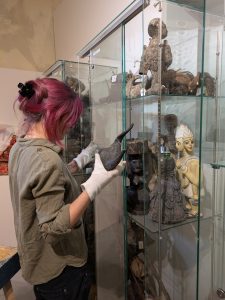
The Beginning of an Adventure: The Reorganization
In 2024, the Château Vodou team embarked on a major challenge: to completely rethink its storage facilities. Our goal was to better preserve the pieces in the collection, make them easier to study, and ensure they could be packed efficiently when loaned to other museums. Then a bold idea emerged: why not take advantage of this project to create a space that could also be visited by the public?
To make this project possible, it was first essential to seek support and partners. Indeed, reorganization requires funding. Then a schedule had to be established, and the work was able to begin in May 2025.
A. Beck, Administrator
A Method from Canada
Since reorganizing storage is not a common task, the team first looked for information about possible procedures and action plans. That is how we decided to adopt a recognized method, developed in Canada with UNESCO: RE-ORG.
This method provides a clear, step-by-step process for organizing museum storage. The first exercise was to carry out a self-diagnosis: examining the condition of the building, the spaces, the storage furniture, and the management of the collections.
The verdict was clear: in every category we scored 2 points out of a total of 4. A reorganization was therefore essential, both for the collection and for the working conditions of the team!
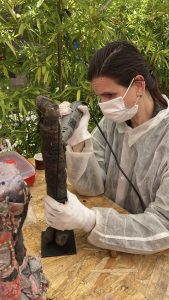
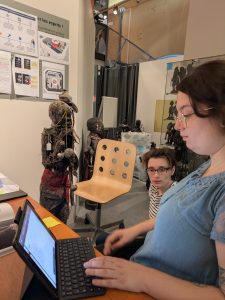
Emptying, Sorting, Imagining
The first concrete step was spectacular: moving nearly 900 objects that had been resting in the mezzanine for 10 years. They were all transferred to the ground floor to protect them during the work.
Then, thanks to the collection inventory, each object was classified by size. This classification allowed our scenographer, Ana Carolina Gonzalez Palacios, to design a new layout for the storage space. The objective? To provide optimal, tailor-made storage, while staying within budget.
In the end, we decided to keep our old glass display cases but to equip ourselves with galvanized steel and wooden shelving (adapted to our objects), as well as new LED lighting.
The 10 Golden Rules
According to the RE-ORG method, a “good” storage facility meets 10 quality criteria. These quickly became the compass for the entire team. Everyone was trained in them, and we intend to continue applying them year after year, within our means:
• A qualified staff member is responsible
• The storage area contains only collection objects
• Separate rooms are dedicated to related functions: office, workshop, storage of equipment and non-collection materials
• No object is placed directly on the floor
• Each object has a designated location and can be found in less than three minutes
• Each object is accessible without moving more than two others (four in our case)
• Objects are arranged by categories
• Key policies and procedures are in place and observed
• The building and storage space provide adequate protection for the collections
• Each object is free of active deterioration and ready to serve the museum’s activities (that’s why we even have a freezer here! In case of infestation, objects are placed inside for 48 to 72 hours depending on their size).
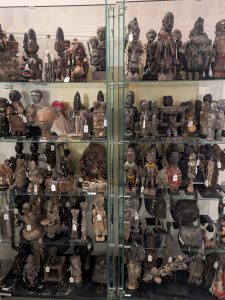
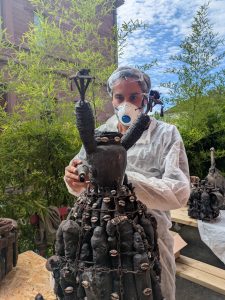
Inventory and Documentation
The reorganization was also a wonderful opportunity for scientific work. Throughout the summer, the team took advantage of the move to enrich the inventory, carry out a complete verification, and perform maintenance on the collection!
Each piece was located, cleaned, measured, weighed, and described. The records of the 1,200 objects in the collection were updated and sometimes enriched.
Once the work was completed, the objects regained their place in the new storage facilities, arranged according to the RE-ORG principles. Now, each object can be identified at a glance and accessed effortlessly. Some were even grouped by typology: for example, display cases containing human bones include no wooden elements, in order to prevent the acidity of the wood from damaging these remains.
What Remains to Be Discovered
In September the project was completed. The objects, now better protected and organized, proudly occupy their new space.
But the adventure does not end there. Some pieces still hold their mysteries: their names, their exact origins, or their ritual uses remain at times only hypotheses. To uncover the truth, fieldwork will be needed in Togo or Benin, to meet practitioners of the Vodou religion and the scientific community.
We hope to achieve this in the near future, so that we can make our inventory available online to the public.
But that is another chapter of the story…
